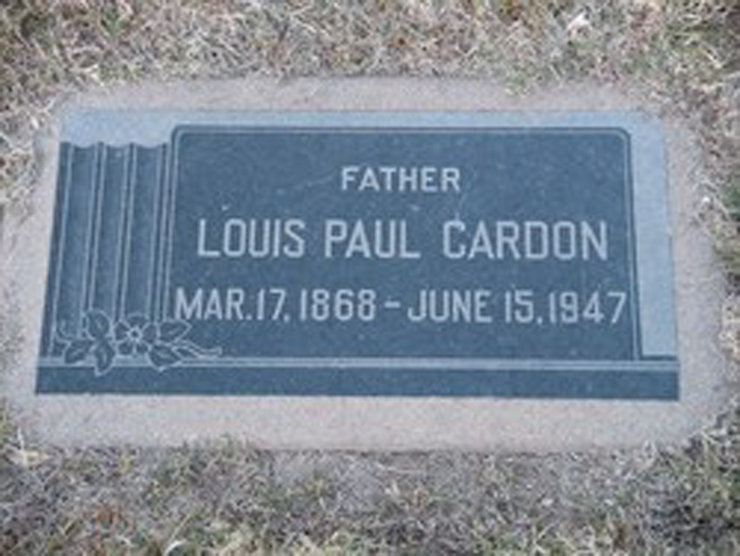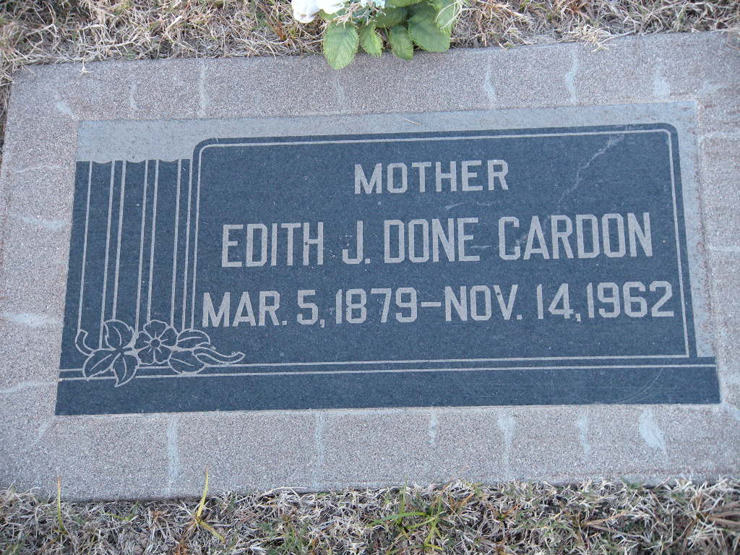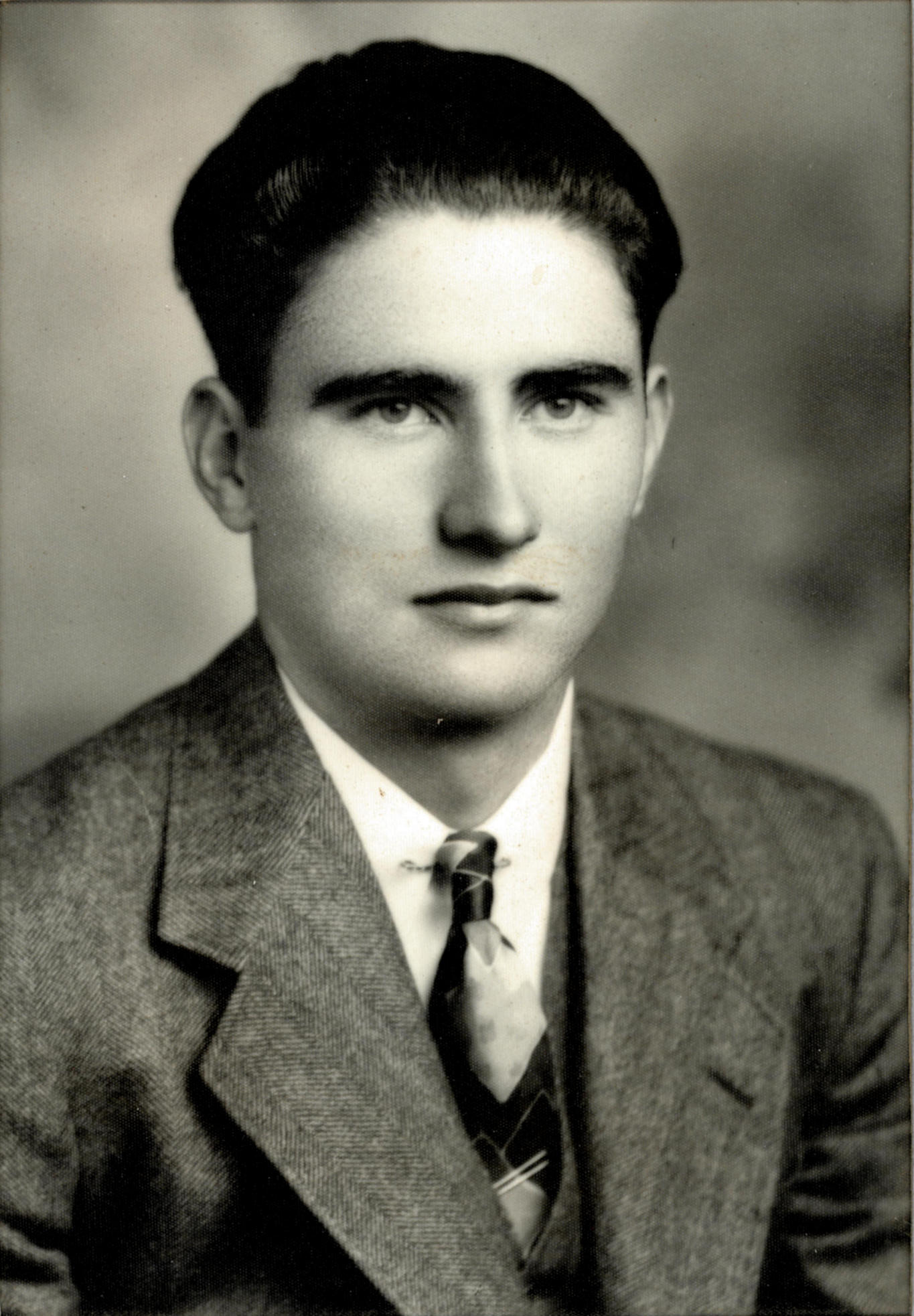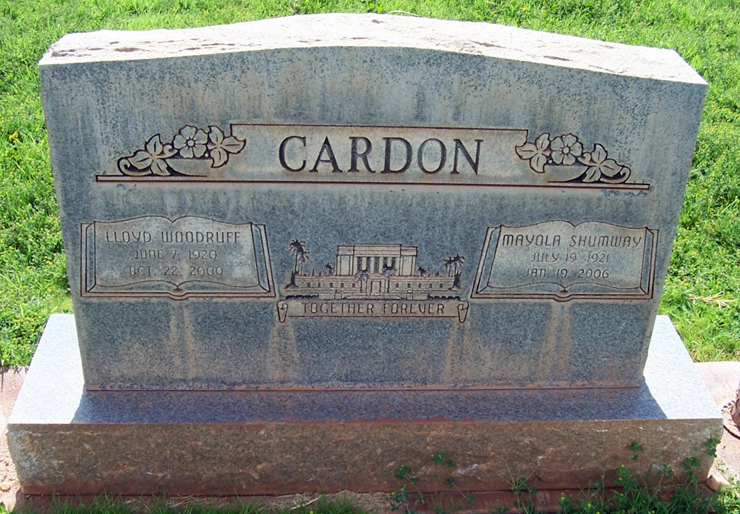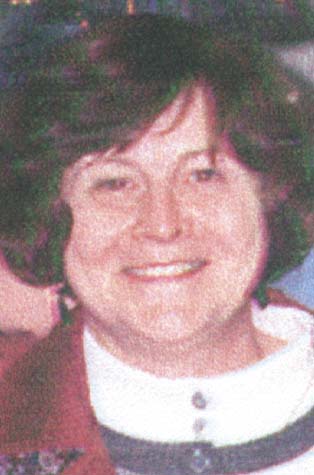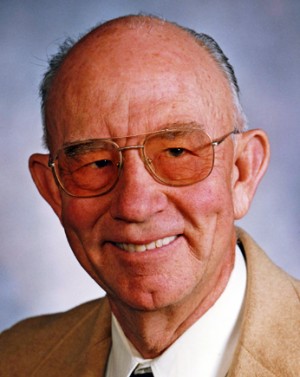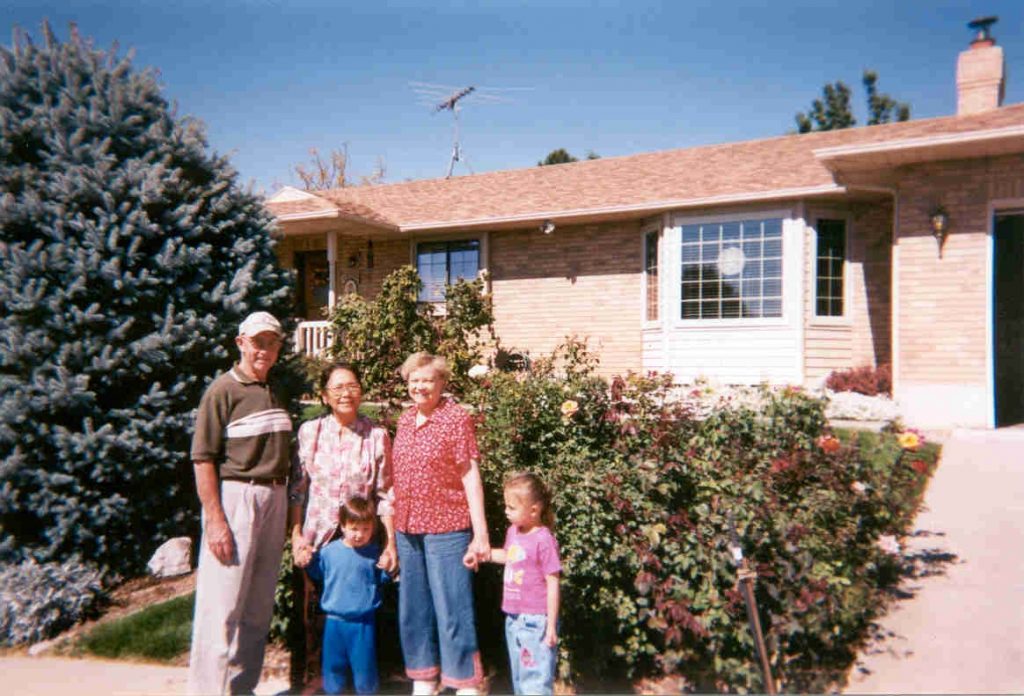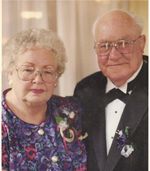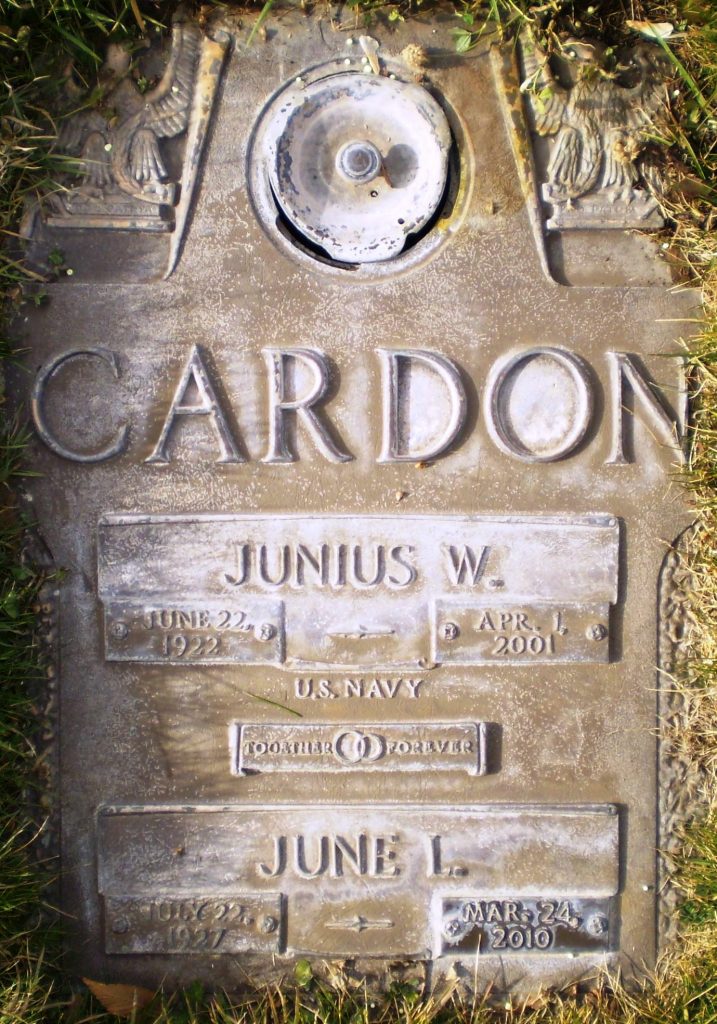Married 23 Feb 1901
Louis Paul Cardon is the son of Louis Philip Cardon and Susette Stalè
He is the grandson of Philip Cardon and Martha Marie Tourn
THE LIFE STORY OF MY PARENTS
LOUIS PAUL CARDON & EDITH JEMIMA DONE
By
EDITH CARDON THATCHER (1955)
My father’s family, the Cardons, Stalès, and other Pedigree lines, for about six generations back lived in the rugged Piedmont Valleys of Italy. Many stories are told of their sacrifices and devotion to their chosen religion, the Vaudois, or Waldense. They had the courage to follow their convictions, and endured great persecutions. They were of French extraction, but we are not certain at just what period they went from France to Italy.
When the Gospel was brought to these people, many of them recognized the truth, and joined the Church of Jesus Christ of Latter Day Saints. The Cardons joined in 1854, and the Stales in 1854. They lived in Pra Rustin, Pioza, Rora Pra del Tour, Pramol and Others of the Valley towns, and the families were very likely acquainted over there.
Grandfather Louis Philip Cardon was about 21 or 22 when he and his family came to America. He was married first to Sarah Ann Wellborn. They did not have any children. She was a good wife to him, and when the principal of plural marriage was introduced by the Prophets of the church, gave her consent for him to practice it. Grandmother Susette Stale was five years younger than he was. She and her parents and her family came over in the First Handcart Company. Her father Jean Pierre Stale died on the way.
Louis Philip Cardon and Susette Stale were married in 1857. Their first home was in Ogden, Weber County, Utah, and two of their sons, Joseph Samuel and Emanuel Philip were born there. Then they moved to Logan, Utah, where Mary Catherine, whom we called “Aunt Katie” was born. Finally, in search of a livelihood, they moved to Oxford, Oneida County, Idaho, and here my father Louis Paul Cardon was born. He was born on St. Patrick’s Day, 17 Mar 1868, but the Irish holiday did not mean too much to this young lad whose forbears, while from Italy, were of French extraction. They had become pretty well used to the English and American ways by now. The youngest child, Isabelle, a beautiful little girl was born in Oxford. She lived a little less two years.
The family had a struggle making ends meet. The Stales had been rather prosperous in the Piedmont Valleys, having two homes, but what little they got out of the property, after joining the church was put into clothing for the family which in turn was left on the plains as the handcart seemed to get heavier. But they were industrious and frugal, and did not lack for the necessities of life. The Gospel was the shining beacon in their lives, and they sacrificed much. Grandfather Cardon taught his children to love the Gospel and to live righteously. His life was an example for all to follow.
Young Louis Paul always looked up to his Parent and older brothers and sisters. He was an attractive child, with dark brown eyes. His hair was white for a number of years. His long white curls were not cut off until he was six years of age. Then his fair gradually darkened until he had real dark brown hair to go with his eyes when he became a young man. He loved to join in games and play, but had his assigned chores to take care of. He attended school several months each year in the colder months, but had to work a lot.
He was baptized by Noah Brimhall in Oxford, in 1876, and was confirmed immediately, as was the custom, Jon Boice officiating. Then when he turned 9 years of age the Cardon Family was called to go settle in Arizona. It was quite an arduous journey, with the family belongings being loaded into wagons. But they recognized the call to colonize, and moved into the northern part of the state, finally settling in a little log cabin, by the side of the creek going through the center of Taylor. Part of it still stands.
Louis Paul’s schooling was interrupted, and after he was 12 years of age he did the work of a man on the little farm. As he grew older he helped haul freight between the northern Arizona communities, picking it up at the end of the railroad. This was hard work. Indians had to be watched for, and the roads were bad. Many times they had to double up teams to get the supplies over the high mountains, and when winter set in it was cold and icy as well.
His father decided to move on down into the colonies in Mexico and help build up there, about 1886 or 1887. Louis Paul helped them in driving their wagons, and the cattle. It was on this move that they had hauled their wagon train as far as what is called “Seven Mile Hill”. It was late so they decided to camp. The Indians were on one of their periodic War Paths, and a hunting party came close, building their campfires and holding what appeared to be a council. It was a trying time. No one dared to go to bed. Some of the women in camp became very excited and wanted someone to go for help and finally prevailed on Papa, about 17, saying he could slip through in the dark. But Uncle Joe, his older brother stopped him as he was ready to leave, saying that undoubtedly the Indians had the camp surrounded, and he would be killed. The Indians powwowed, practically all night long, but suddenly left a little while before daylight. The group immediately broke camp and hurried down the hill into the next town. Some Indian women belonging to another tribe escaped from the War party, and came into town that evening saying that the Indians had left suddenly to attack a settler a few miles away, as they didn’t want to attack our train while they were ready and waiting. They expected to be back in time to attack in the confusion as they were preparing to leave, but the settler did not come out of his cabin very early, so they were too late. After the move to Mexico was completed Louis Paul returned to Taylor to take care of his mother who had remained there.
He recognized the need to complete his schooling, and so saved his money until he was able to go to Logan to the Logan Agricultural College, where he took a pre-entrance course, and then attended for the four years, graduating about 1894. He was in school with Dr. John A. Widstoe, and a number of other prominent men. He graduated among the highest in class, especially mathematics. He was interested in surveying and astronomy.
He then returned to Taylor, where he taught school for one year. When he was 27 years of age he took as his bride Ellen Clymena Sanders, being married in the Salt Lake Temple, 9 Oct 1895. He found time in this busy time of his life to work in the church. He and Aunt Ella (as we called her) both worked in M.I.A. in Taylor, and with the young folks.
Their oldest child, Ellen Katie was born 23 July 1896, and when she was about a year old he was called to Colonia Dublan, Chihuahua Mexico to be Principal of the school, and teach. So again it was put the belongings into the wagon, and head the trusty teams of horses south. The family immediately fit into the community, working in the church and with the young folks. Louis Paul was also chorister and played the organ. I still remember how we children loved to coax him in later years to play our favorite tune, “Lincoln’s March”. He taught in the school for fourteen years. The School Conventions and Church Conferences were held in Colonia Juarez.
He and Ellen Clymena Sanders also had the following children, all born in Colonia Dublan. Lucille, 9 Oct 1897; Gretta, 27 Sept 1898; Paul and Irene Cardon, twins who died the day they were born 23 Apr 1900; Louis Sanders, 10 Aug 1901; Mariner Sanders, 21 Oct 1906, who died when he was about three; and Isabelle, 7 July 1908.
Shortly after the move to Mexico he seriously considered entering into the principle of plural marriage. The colonies had been settled around 1885 by those who were following the principle, and a number after the Manifesto, forbidding Polygamy because it was against the law of the land, moved there as it was permitted for a short time. He and Aunt Ella discussed it and after prayer decided to enter into the practice. He married then, Edith Jemima Done, (m 23 Feb 1901) and later Mary Irena Pratt, (m 11 Nov 1903).
The Done family and all of Edith Jemima Done’s family were strictly English, and most of them belonged to the Church of England, so they did not have the history of persecution that father’s family did. The family were musical. Her grandmother, Sarah Barker Done being the soloist for the Parish in Thornhill Lees. Edith (mother) says that she had a beautiful voice, even as she grew older and when she started singing while she worked, all the children would gather round, and tiptoe quietly to the doors or get under the windows to listen. Uncles, John Done played the organ, and bass viol, George played the cornet, and Abraham (grandfather) played the violin. This group furnished music for dances, theaters, and other occasions in the Utah Valleys. John was her husband, the others her brothers-in-law, (of Sarah Barker Done.)
The Great Grandmother, Anne Hancock Done, a widow of Abraham Done, with her sons, John, James, George, (baptized in 1851-2), and John’s family accepted the Gospel, and came to America and across the plains with the Saints, settling in Payson, Utah.
It was here that mother, Edith Jemima Done was born to Abraham Done and Elizabeth Annie Robinson, 5 May 1879. She was the oldest daughter, having a brother Arthur Jesse older. Other children in the family were Abraham (died age 1 yr), Joseph Franklin, Mary Brentnall (called May), Eva Sarah, Ethel Cholerton, Robinson Parkes, Jede Barker (died age 3), Heber John, and Abram Wilford (died age 3 ½).
Edith was a lovely child, with light complexion, and almost blond hair, and blue eyes. She was blessed by Henry J. Boyle, 3 Apr 1879. She was seriously ill when she was about 2 years old, with a high fever and unconscious. Her father was due at a Priesthood meeting, and was almost afraid to go, as it looked as if she might die. But her mother told him to attend to his duties, and to have the baby prayed for, and she was sure to be alright. About the time the prayer was given, Edith roused up looked around, and she wanted to play by the time her father returned. The family was brought up to love the Gospel, and taught to live as they should.
Edith was baptized 7 Apr 1887, a frosty cold morning. Snow lay in patches on the ground. The family went to a box tank that had been made in a stream for the purpose. Preparations were made and Thomas E. Daniels baptized her. She was confirmed by A. Abegg. She says that she did not notice the cold too much.
Her schooling commenced when she was 7 years of age, and she did well in her studies. She also was active in the church, as she taught in Primary and Sunday School, while she was still in the Elementary School. When she was in the Eighth Grade, the Bishop called her to go to the Brigham Young Academy (as the University in Provo was called then) to take the teacher’s training course. This was a 12 week course for training in church teaching, which ran for 6 weeks before Christmas till six weeks after. This move was strongly opposed by her school teacher as he felt that it would be impossible for her to complete her studies and graduate with the class if she did this extra work. However, the Bishop advised her to prepare for teaching in the church organizations, and promised her that she would derive a lot of benefit, and be blessed. She was able to take the fundamental subjects, Arithmetic, Grammar, and Geography, with the 8th grade at the Academy, while taking the Course. She then returned to Payson, and finished with her class, being among the highest group, much to her teacher’s surprise. She was 15 years of age. After that she taught in the church organizations a good share of her life, mainly Primary and Sunday School.
Talented in music, she took piano lessons under Prof. Anthony C. Lund at the B.U.U. He became the director of the Tabernacle Choir after John J. McClellan. The “Beautiful Blue Danube Waltz” was his favorite, and she remembers Prof. Lund having her play it, while he closed his eyes and swayed in time to the music. She was a member of the choir after she was 14, and also sang in the Academy Chorus while there. She usually sang Alto. Her father, Abraham, and brother Arthur played the violin, her brother Joseph the Cornet, and so with her at the organ, the “Done Orchestra” played for many dances and amusements in Mexico for many years, and gave lessons, having as high as 14 students at a time.
Louis Paul was active in Church work, being Superintendent of the Sunday School in Colonia Duban when Edith J. Done moved there, and met him. He worked mostly with the young folks. Edith went to choir practice with May Pratt, and when they Director came in she thought, “What a fine young man! One I could like”. Then she learned he was married, so didn’t think much more then. When she began teaching the Intermediate Class in Sunday School the Officers meetings were held at night. She went, then as she was leaving heard a voice, “What’s the hurry, Miss Done?” The Sunday School Superintendent took her home. Their friendship deepened, and she finally consented to marry into the family.
Twelve children were born to this union; Louie, 23 Dec 1901 (died age 9 months); Edith 9 Apr 1903 (myself); Mary, 20 Oct 1905; Florence, 28 Jan 1907; Paul Done and Ellen, twins, 28 Dec 1908 (Paul died age 5 ½); Eva, 5 Nov 1911 (died 7 months). These were born in Colonia Dublan, the rest in Binghampton (near Tucson), Arizona. They were; Ethel, 5 Jan 1915; Lucy, 12 July 1916; Thomas Done, 6 Feb 1918 (died age 15 months); Emanuel Done, 11 Mar 1919; and Lawrence Done 24 May 1921 (died 3 months).
Louis Paul and Mary Irena Pratt had the following children: Parley Pratt, 1 Sep 1904 (died age 27); Dora, 13 Dec 1907; Wilford Pratt, 28 Oct 1909; Stanley Pratt, 9 Oct 1911; all born in Colonia Dublan. Those born in Binghampton were Bartley Pratt, 1 Oct 1913; Heleman Pratt, 13 Nov 1915; Edna, 17 Aug 1918; Amy, 2 Aug 1920; and Orson Pratt, 22 June 1922.
Close cooperation existed in the family group. Aunt Ella and Mother taught school to help out. After teaching fourteen years, Louis Paul decided to quit, and begin farming to make a livelihood for his growing family. He built a large home. Louie had been born in the small house, but ZI was born in the new home. We moved to the White House after the twins were born, and then lived in a red brick house at the time of the Exodus.
The farms of the colonists were on the outside of the town. Irrigation was a problem then, so it was decided to make what was called the “Big Canal”. He was chosen as the surveying head, and laid out the new irrigation system. Many shook their heads saying, “He can’t make water run up hill”. The whole town turned out the day the water was turned in the canals, but it ran perfectly.
Plentiful water made the farms produce more, and the prospects for the colonists’ welfare were very encouraging, when war clouds came up, the Revolution broke out in Mexico. All the Mormons and white settlers were ordered to leave, and the Exodus was in July 1912.
The families were in El Paso during that summer, then Louis Paul moved to Jaynes Station a short distance out of Tucson with Aunt Ella’s and Aunt Irena’s families. Aunt Ella taught there. Mother got a teaching job at Canoa Ranch, so we went there one year then with the same group to Rero Ranch for a year, Papa was at Jaynes Station one year then moved to Binghampton. It is now a part of Tucson, but then was about five miles outside of the city limits. He bought some new land there, developing it, so Mother joined the family. Melon, Potatoes, onions and other vegetables grew well, and we had a lovely orchard, just beginning to bear. But it was under a well irrigation system, and the water gave out as it was not developed as it should be. There was a river, the Rillito, running through our property, but it did not have water in all the time. I remember one flood in it though, that really caved a lot of the farm land into it.
Louis Paul left Tucson (Binghampton) about 1925, and farmed northeast of Mesa, then took over the Chandler farming property. Edith began teaching again, one semester in Eden in 1922, then went to the Gila Academy to finish the year she couldn’t in Payson and graduate. Then she taught in Virden, New Mexico until 1927. Aunt Ella taught a number of years until she was eligible for her pension when she lived in Mesa until she died 8 Oct 1953. They had cows on the Chandler farm, and raised hay, grain, and hegira; also went into poultry raising on a large scale. Mother and the girls had charge of the chickens.
In 1937, since his health was not too good, he rented the Chandler property to Marion Plumb Thatcher, husband of his daughter (myself), and later sold it to them. He and mother moved to Mesa; Aunt Irena to Tucson, where her boys were attending the University of Arizona. He raised fryers and broilers a number of years in Mesa.
Louis Paul Cardon was a counselor in the Branch Presidency of Binghampton for a number of years, with Bishop Heber E. Farr, and C. S. “Farmer” Brown, and he was also active in Chandler. They all did Temple Ordinance work after the Temple was opened, and he was a set apart Temple worker from about 1930 until he died. When the baptisms for the dead seemed hard to get lined p he inaugurated and was in charge of the Baptismal excursions for the Dead, which continue until the present time. He worked in the Stake High Priests Quorum Presidency, and also the Genealogical Committee.
He was about 5 foot seven inches in height, and his average weight 165, being quite slender until he had the typhoid fever after Florence was born. Then he put on some weight. Diabetes was controlled by diet for about the last 20 years of his life, but he never slowed down much. It was only the last two months of his life that he was excused from his Temple duties. He died 15 June 1947, in Mesa, having lived a wonderful life. Aunt Irene died 19 July, 1948.
Mother and he began genealogical research in the 1930’s and were successful in gathering a large number of names and relatives from Italy and France. She taught in Mutual and Relief Society too. When she moved to Mesa she took care of her husband’s sister, Aunt Katie for a number of years, and Aunt Katie arranged it so that Mother had her home after she died. Her Genealogical work was extended, and in cooperation with her daughter Edith, some 17,000 names on her lines were found in the English Registers in the Arizona Temple Genealogical Library.
She has charge of checking the Baptisms, Endowments and Sealings on these names that have been gathered. She has also worked as a sealing proxy for the Temple.
Her testimony was strengthened a number of times when her children were healed by the power of the Priesthood. At one time Ethel was unconscious, and had a fever over 105; after being administered to, she relaxed, quieted, and was normal by morning. Emanuel weighed 15 pounds when 15 months of age, but was restored to health. Five of her children passed away, but she always prayed, “They Will be Done”. She herself was very ill in 1931, and it looked like her time had come. Grandmother visited her, then prayed, and had her name put on the Temple Prayer Roll. Grandmother says she received the assurance that mother’s health would be restored, and that she would do a great work in Genealogy, which she literally has, and is doing.
Thus I record the story of my parents, — the most wonderful parents a person could ask for. Their lives have been full of sacrifices, but their love and devotion to the principles of the Gospel have been an inspiration to all.
Mother wanted the following information on her activities added.
Sunday school worker, Payson, Dublan, and Chandler
Primary, Payson and Dublan
Y.L.M.I.A. Dublan
Y.L.M.I.A. Gleaners, Chandler
The age group she taught in Y.L.M.I.A. in Dublan was Aunt Irene, Aunt Nellie, and Aunt Leah Call.
Relief Society in Binghampton. Grandma Done was in her Relief Society class in Binghampton.
Death Certificates:
Grave Markers: Mesa City Cemetery, Mesa, Arizona
